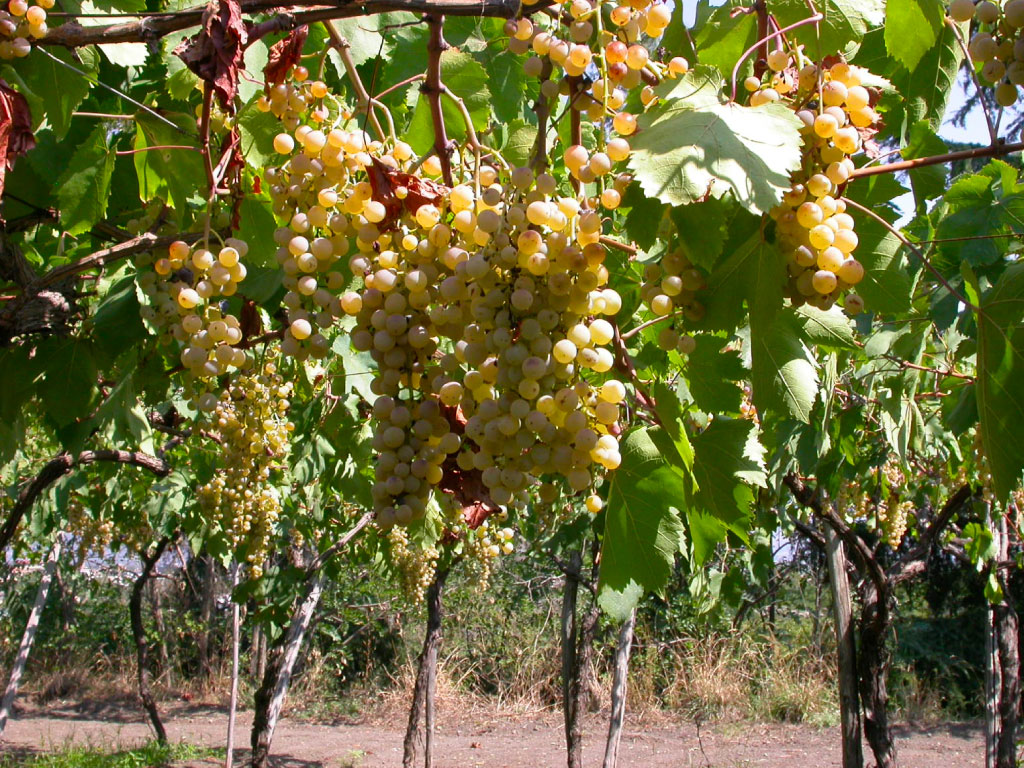This fruit owes its name to its geographical origin: it was imported from Catalonia by Alfonso I of Aragon in the fifteenth century and planted on the slopes of Mount Somma, between Somma Vesuviana and Terzigno.
On these fertile volcanic soils, the grapes were soon used by the local peasants to make wine in the cellars of the farms, where it’s still possible to find presses dating back to the 1600s. Only the excess product was used as table grapes.
It can remain on the plant until the end of the year: in the past, people left the most beautiful bunches on the plant, gradually eliminating the dead berries, so as to encourage conservation until Christmas.
Production area
The territory involved in the production is included in the following municipalities: Somma Vesuviana, Sant'Anastasia, Pollena Trocchia.
Description
Catalan grapes have bunches of medium size, slightly elongated berries and a greenish peel, which turns to golden yellow when the fruit is completely ripe.
The pulp is white and fleshy and is much appreciated for its sweet taste, the high sugar content makes it suitable for winemaking, which occurs only locally and exclusively at family level. Since 2006, it has been officially added to the list of wine grapes.
Seasonality of the product: it’s harvested between October and November.

